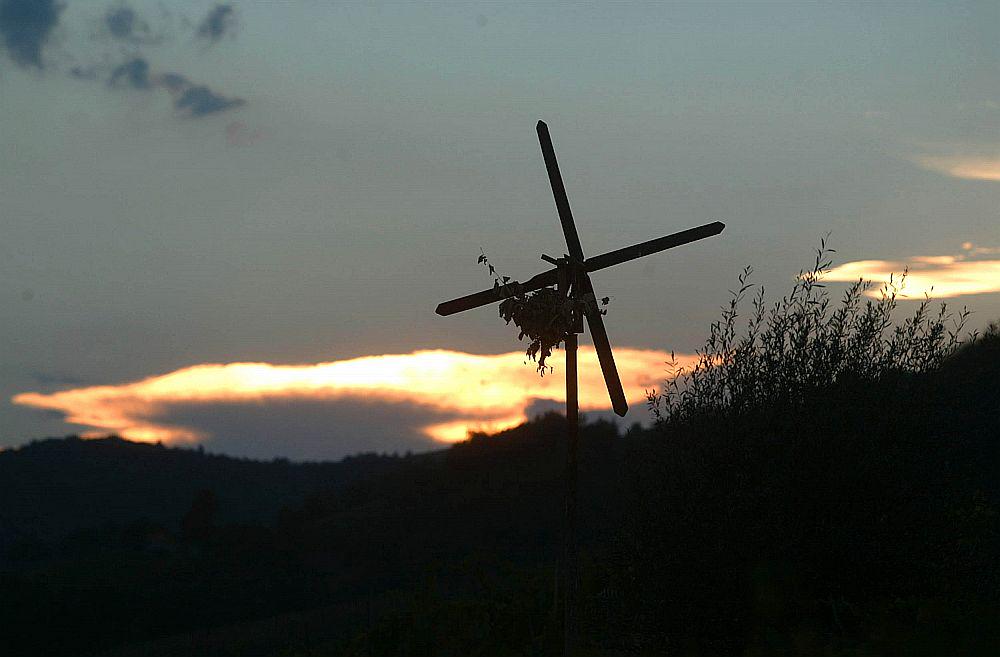
When the wind blows, an unusual sound can be heard over the vineyards of northeastern Slovenia. The persistent rattling comes from small windmill-like contraptions on tall wooden polls, which have become a symbol of that part of Slovenia.
The wooden devices, known as “klopotci,” are elegant in their simplicity: The wind moves the vanes, powering a central rod, whose movement around its axis causes small blocks of wood to strike a fixed wooden panel. The resulting rattle is loud and conspicuous s—which is precisely its intent. It drives away birds that would otherwise cause damage to the local vineyards by eating the grapes.
The design is so old that its exact origins are unknown. In parts of the Štajerska (Slovenian Styria) province, the first examples of “klopotci” were probably in use by the 16th or 17th century. While records are few and far between, these Slovenian designs were, in all likelihood, the first wind rattles in the world.
Today, “klopotci” can be found throughout Štajerska, in several other Slovenian regions, as well as in Austrian Syria. Even there, however, the Slovenian term – with the spelling changed to “klapotetz” -- is widely used.
The raising of new “klopotci” is a cause for celebration in many Slovenian villages, and even a folk music festival is named for the traditional wind rattle. Some villages display their local pride by erecting “klopotci” with as much intricate decoration as possible.
For years, eastern Slovenia has been trying to catch up with the west of the country and establish itself as a tourist destination in its own right. Local authorities are now discovering that “Klopotci” and the festivities associated with these age-old devices are not just a part of regional heritage, but can also be used to attract visitors and can introduce them to the bucolic beauty of the area’s largely undiscovered wine country.

































































